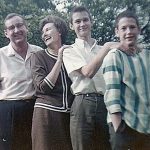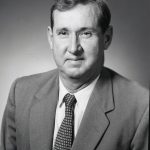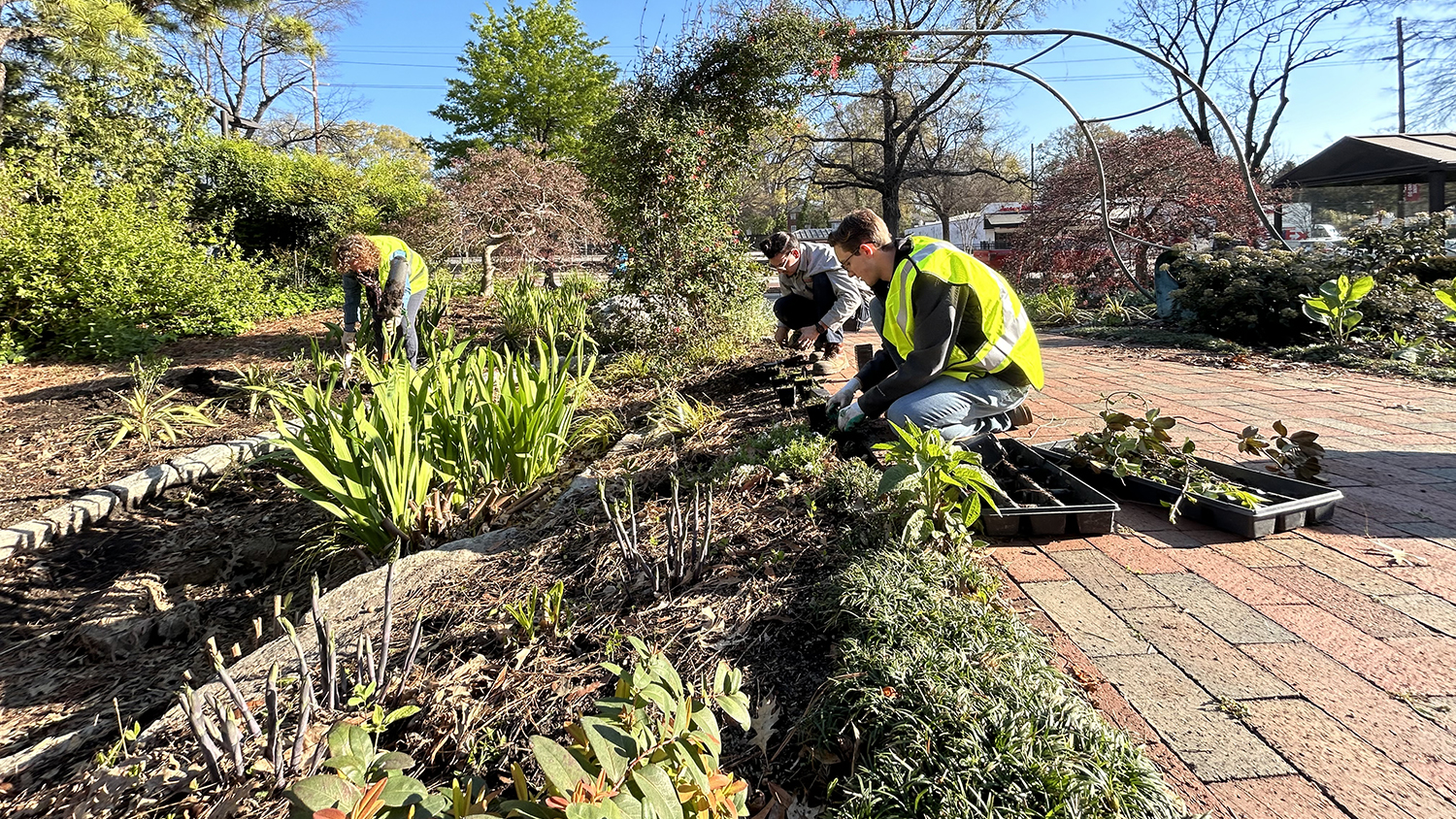A Fruitful Family Legacy
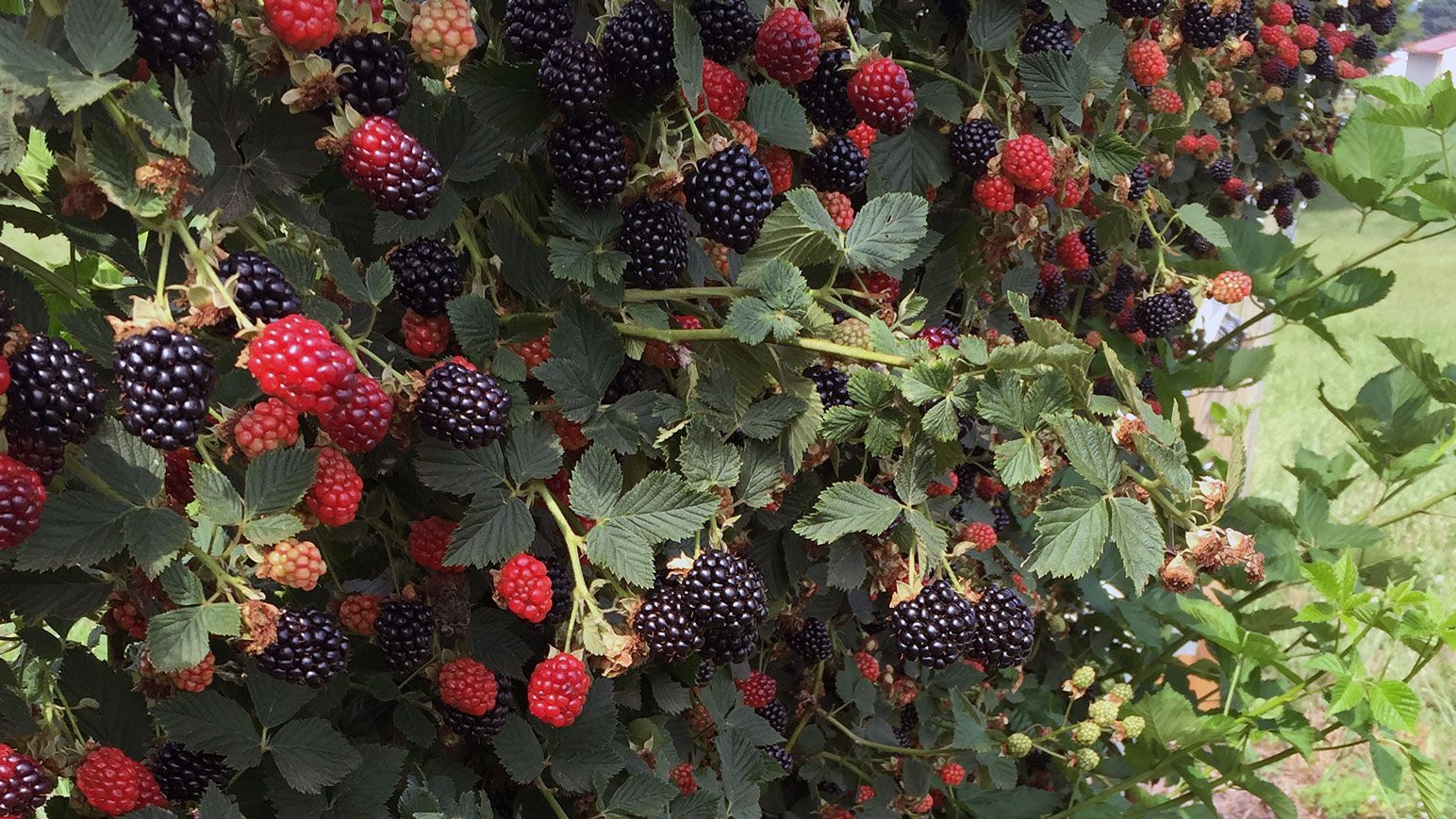
The Underwood family’s vibrant history at NC State includes decades of agriculture and artistry, three generations of graduates and two fruit varieties. Specifically, a thornless blackberry named Von and a muscadine grape named Doreen.
The fruit varieties honor a remarkable couple who met while serving at Allied command headquarters near London at the height of World War II. They traveled with U.S. Gen. Dwight D. Eisenhower, survived bombings and toured Hitler’s bunker before returning to the U.S. to raise two sons.
At NC State, Von Harvey Underwood contributed to horticultural research for 35 years. Artist Doreen Goodall Underwood taught at the Crafts Center long enough to welcome her granddaughter to a watercolor workshop.
The couple might never have met if he hadn’t earned his degree from NC State.
Fateful Events
Von Harvey Underwood, nicknamed “Harv,” grew up in rural Bladen County, where he participated in 4-H and graduated from Tar Heel High School. He earned a bachelor’s degree in horticulture from NC State in 1941.
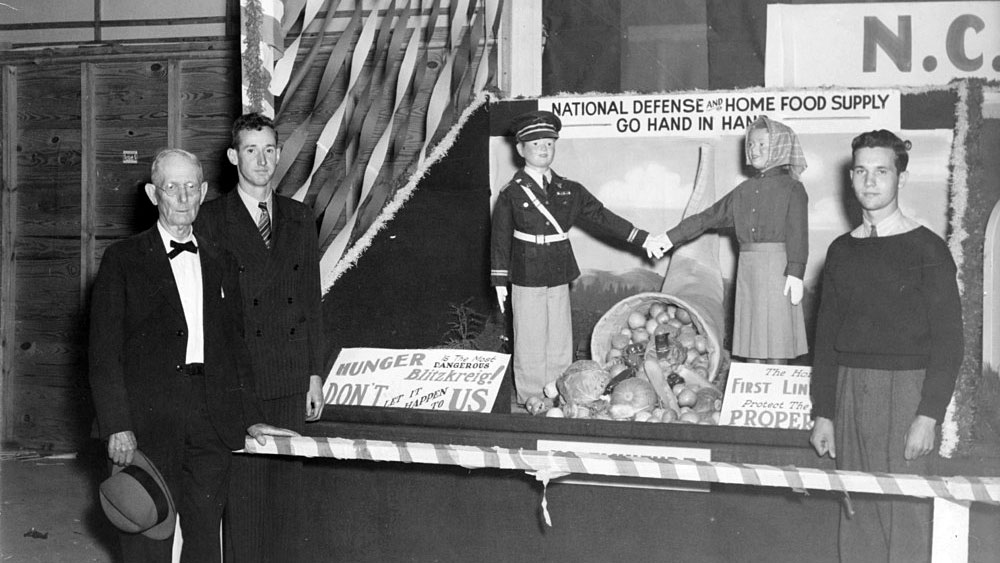
After brief stints with the Farm Security Administration and Works Progress Administration, he joined NC State as a horticulturist in 1942. The following year, he enlisted in the Army as an infantry soldier.
“He would have stormed ashore in Normandy on D-Day. He thought he was going to be doing that,” says older son Bill Underwood. “But one day someone walks through and calls out, ‘Underwood?’ He says, ‘Yes, that’s me,’ and is told, ‘Come with me.’ He just grabbed his C bag and all his stuff and was gone, transferred over to the command near London.
“He said he never knew why he was chosen but always thought it was because he had a degree and had worked at a university.”
Underwood was assigned to the command planning Operation Overlord, the Normandy landings of more than 156,000 soldiers on D-Day. While with the Supreme Headquarters Allied Expeditionary Force (SHAEF), Von met Doreen Goodall, an English commercial artist. Doreen had joined the Auxiliary Territorial Service (ATS) in 1939 as British women took on vital roles during the war.
After a year creating fashion sketches for newspapers, Doreen began using her illustration skills to draw maps for the Allied Forces.
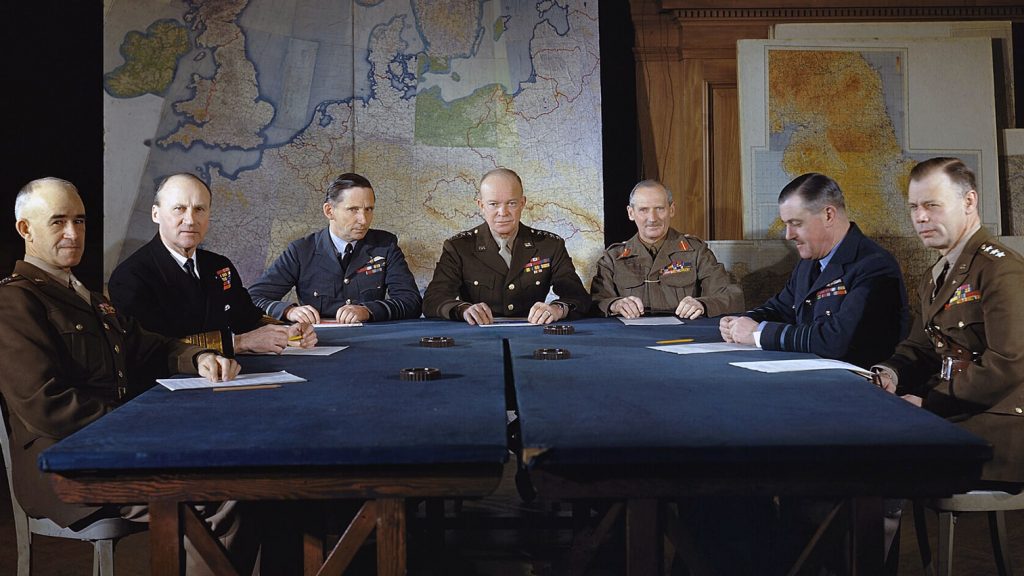
“She always pointed out that she didn’t feel like she was in an auxiliary support group,” says younger son Von Edward Underwood. “They were directly involved in the war effort, and she was proud of her service in ATS and what she’d done.”
Her work earned a commendation from Eisenhower and a British Empire Medal. In addition to her strategic mapmaking, Doreen designed the iconic patch that members of the command wore: a flaming sword.
Bombings and Hitler’s Bunker
In summer 1944, bombs were a constant threat.
In early June, Doreen took a bathroom break at work and returned to find the office windows blown out, her desk covered with thick brick dust and glass shards embedded in her chair.
“She fumbled around and picked up her tin hat—her helmet—and her gas mask and headed toward the stairwell,” Bill says. “About halfway down, the stairwell just stopped in midair. It was gone below that.”
Doreen made her way to the other side of the building, discovering a co-worker and a way out.
“The next day she gave a broadcast on the BBC to the United States about what women did in the women’s auxiliary in the British Army,” Bill says. “And then her diary says, ‘Went to see a movie with Von.’”
Two days later the first aerial buzz bombs landed, a week after the D-Day invasion.
A few weeks after the Allied victory in 1945, Doreen and Von climbed down for a look at Hitler’s bunker. Von wrote a letter about the experience to his mentor, NC State horticulture professor M.E. Gardner, using stationery from the bunker.
“One of the things I remember it saying was that the bunker was dark, damp and smelled of death,” says Bill, who has a copy of the letter, which is preserved in NC State archives.
Soon Doreen was sent back to England and Von was assigned to Berlin. But Von learned that he’d have a job waiting at NC State following his honorable discharge, thanks to Professor Gardner.
Domestic Tranquility
In 1947 Von and Doreen reunited and married. They settled in Cary, then too small to have its own post office. As they brought up their two sons, they said little about the war, but the boys asked questions about their dad’s black-and-white photos in the china cabinet.
“Our parents, like many in their generation, wanted to build a safe community,” Von Edward says. “We walked to school and played in the park near our house until somebody called us to come home for dinner. It was something that was not traumatized by warfare for us.”
His father returned to work at NC State as a research instructor in the Department of Horticultural Science, working to develop varieties of bramble fruits and muscadine grapes.
The boys remember visiting research farms in Clayton and greenhouses on campus, along with sampling giant berries and melons and the occasional grape from research trials. They enjoyed campus events such as engineering fairs, arts performances and sports. Both expected to go to college from an early age.

In the early 1960s Doreen was teaching arts and crafts in Raleigh, including courses at NC State’s Crafts Center. Within a few years, she was up for promotion to assistant director of the center. Her references included a commendation letter from Gen. Eisenhower and documentation of her medal from King George VI.
Scores of students, particularly those majoring in design and textiles, benefited from working with Doreen from the 1960s through the 1990s. She was skilled in artistic fields from metal etching to pottery making. She sheared sheep and carded, dyed and spun wool for weaving projects. Her oldest granddaughter, Suzanne, joined her for a campus watercolor workshop.
Von Harvey continued the patient work of developing new bramble fruit and muscadine varieties. For a while, he carpooled to work with horticulturist Jim Ballington, who lived on the same street in Cary.
Campus Memories
Bill, two years older than his brother, enrolled as a design student at NC State in 1966. The following year, at the peak of the Vietnam War, he joined the U.S. Navy Submarine Service, where he served for four years.
“I came back just determined to be a microbiologist,” he says. “I picked botany because it had the largest number of free electives that you could take in the curriculum, and I took every microbiology and biochemistry course I could.”
His first summer session, he had a volleyball class to fill a physical education requirement.
“I’m 6’ 3”, so I usually would end up spiking the ball,” Bill says. “But every time, this one guy would be opposite me and he would ram the ball down my throat. I couldn’t figure out what the deal was, but everyone would yell, ‘Yay, David!’”
It was David Thompson, dubbed “Skywalker” for his dunking ability on the basketball court.
“I had been underwater in a submarine for four years, so I had no idea,” Bill says, chuckling. “He had a 42-inch vertical jump, and I probably had a one-foot vertical jump.” Bill was on campus to see Thompson in action during the 1974 NCAA championship season.
“I had a really good experience at State,” he says, adding that he enjoyed dropping in to visit both parents at work as he walked across campus.
“They had torn down Riddick Stadium, so I often parked my car in the deck where the stadium used to be, which was right next to the Crafts Center. I could walk in and say, ‘Hey,’ to my mother or visit while I was eating a sandwich. And then I’d be on the other side of campus near Kilgore Hall and see my father over there.”
Both sons remember being struck by their dad’s diligence. Looking at meticulous records of plant crosses, Bill realized that each one involved several years of work.
In the early days of computerization, Von Edward, a UNC Chapel Hill graduate who earned a doctorate from Boston University, wanted to find a way to digitize his father’s many research notecards for easier analysis.
Bill finished his B.S. in botany and was accepted into graduate studies with Professor J.J. Perry’s microbiology lab. He took a position with pharmaceutical firm Burroughs Wellcome before defending his thesis in 1977.
A few weeks into the new job, his dad went in for what was expected to be a routine heart procedure. However, doctors found major blockages in cardiac arteries and scheduled him for surgery. His family visited him in Duke Hospital the night before.
Von Harvey lapsed into a coma after surgery and died a few weeks later, on Sept. 6, 1977. It was a shock to everyone.
Living Legacy
Co-workers planted a tree at the J.C. Raulston Arboretum to honor Underwood and his many horticultural contributions.
“He was one of the inventors of a raspberry variety and 11 varieties of muscadine grapes, including Noble, which is still one of the main black muscadine varieties grown,” says Ballington, the horticulturist and former neighbor. “That’s a pretty successful career.”
Bill Nesbitt, the NC State grape breeder that Von Harvey worked with for a number of years, named a new muscadine variety as a tribute to the Underwoods. He chose the name Doreen for Mrs. Underwood, who continued working on campus through the early 1990s. The light bronze, late-season variety has an elongated shape and distinctive aroma. The grapes can be eaten fresh or used in winemaking.
Underwood’s sons have tasted wine from a friend’s vineyard that was made from the muscadine variety named in honor of their mother.
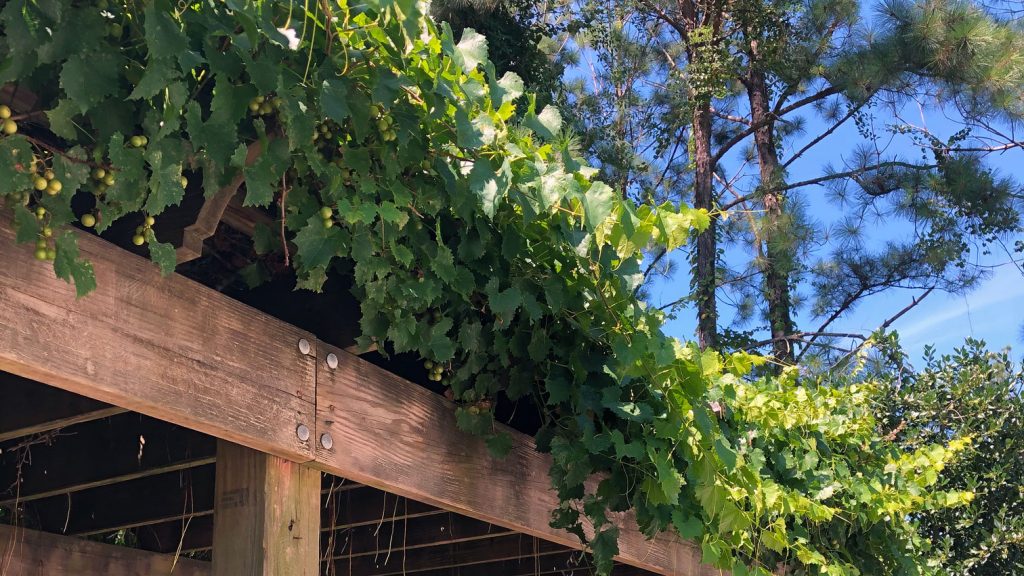
Their father also preserved valuable genetic material from the raspberry breeding program that allowed it to restart after research was temporarily halted in the early 1970s, Ballington says.
“I wanted to honor the memory of Harvey Underwood for his years of service working on bramble crops,” Ballington says.
In 2013, NC State released its first erect thornless blackberry variety, Von, selected because other bramble breeders also had the name Harvey.
“It’s a winner already, and in the process of getting licensed and propagated for placement in Japan and South Africa,” says Ballington, now an emeritus professor. “It’s being accepted around the world.”
In fact, Von has the potential to someday replace Navaho, a popular variety, Ballington says. “It has a similar season but with more disease resistance.”
The news didn’t reach the Underwoods until earlier this year.
Von Edward’s daughter Amanda found it in an online search of family history, bringing joy to the extended family.
“It’s so wonderful to us that his colleagues still remember my father and have given him this honor,” says Von Edward, now the dean of arts and sciences at Cameron University in Oklahoma, where he oversees agricultural science programs. “It’s really moving.”
Bill, who retired as senior VP for business development with Osmotica Pharmaceutical, now lives in Wilmington, North Carolina, where he has a grape arbor covered with Doreen grapes. Bill’s daughters Suzanne Michelle and Jennifer Ann Underwood attended NC State, and oldest son William Thomas Underwood earned a bachelor’s degree in design.
Bill and Von Edward, who maintains a raised garden and small greenhouse, will be planting Von blackberry canes.
The variety grows well in western North Carolina, where it offers strong yields in the late season, when blackberry prices peak, says Professor Gina Fernandez, the current strawberry, raspberry and blackberry breeder for NC State.
“This was such a fun and uplifting moment to have the Underwoods contact me during the pandemic,” Fernandez says. “It’s nice that both of the Underwoods got their recognition.”
- Categories:


